
Photo: Allison / Adobe Stock
Barn doors and pocket doors are space-saving sliding doors. Pocket doors are more unobtrusive, as they slide into a compartment inside the wall cavity. Barn doors, on the other hand, slide close to, but outside of, the wall. Let’s take a look at the other differences between these popular residential internal doorway options.
On This Page:
- What’s the Difference Between Pocket Doors and Barn Doors?
- Pocket Doors vs. Barn Doors: Which Is Better?
- Pocket Doors vs. Barn Doors: Which Is Best For Your Home?
- Pocket Door vs. Barn Door vs. Shoji Door
What’s the Difference Between Pocket Doors and Barn Doors?
While both types of doors are designed to save space and both operate on a sliding mechanism, their appearance, structure, and installation vary considerably.
Pocket Door
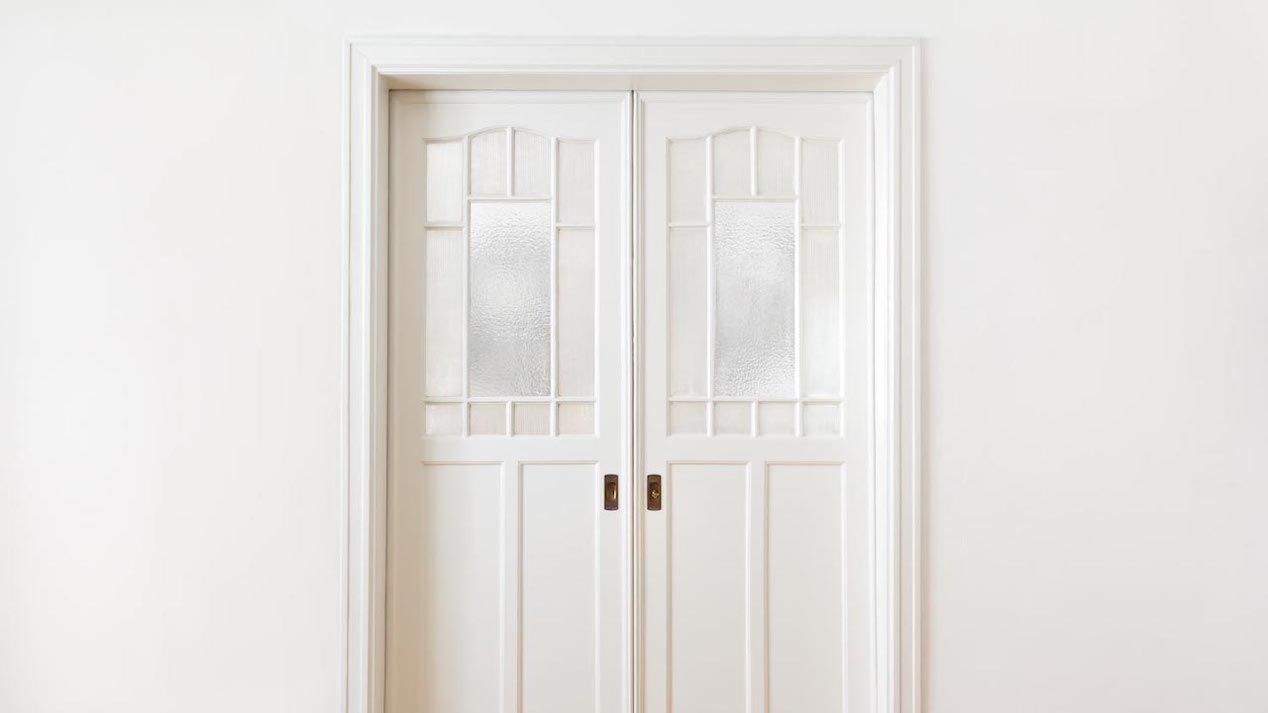
Photo: agenturfotografin / Adobe Stock
Pocket doors save space because they slide into the wall rather than swing into a room. They’re unique because they fit inside the wall cavity when open and therefore can’t be seen. There’s no visible hardware, either, with no hinges or doorknobs. Instead, there’s usually a sunken slider grip with which you can move the door back and forth.
Pocket doors are generally hung with an upper track only, so there’s no standard visible threshold and no bottom track to trip over, improving safety. This lack of a bottom track, however, does negatively impact the sound-blocking properties of the door because there’s a tiny gap beneath that sound can travel through.
Barn Door

Photo: oneillbro / iStock / Getty Images Plus / Getty Images
Barn doors, generally made of wood, are another type of sliding door, but these slide alongside the wall rather than into it. These doors remain visible but still save a substantial amount of space compared to a standard hinged door. Barn doors have a rustic appearance and are fitted with traditional barn door hardware.
Like pocket doors, barn doors only have an upper track and they don’t control sound well. Barn doors are heavy and, if the track isn’t installed properly, they can come off the track easily and be challenging to get back in place.
Start Your Barn Door Installation ProjectPocket Doors vs. Barn Doors: Which Is Better?
Cost
Most budget-friendly: Barn door
Let’s take a look at the cost of a standard 30-inch wooden door. To install a barn door costs $500 to $1,200 while a pocket door costs $500 to $2,900. Installing a pocket door costs more because it’s a more complex and time-consuming task, because of the need to add a wall cavity to accommodate the door when open. Pocket doors are usually added to new builds because it’s more challenging and therefore significantly more expensive to retrofit them to existing homes.
Appearance
Most attractive: Tie
Which one looks the best really depends on your own aesthetic sensibilities. If you want a more rustic look, then a barn door is the best option, with its solid wood construction and traditional metal barn door hardware. Pocket doors are a better option for contemporary and minimalist properties with homeowners who prefer a simplistic look with clean lines and minimal visual clutter.
While barn doors are almost always made from wood, pocket doors are made from a variety of materials, including wood, composite, and aluminum. Some pocket doors are also mirrored, which adds the illusion of extra space to small
rooms when the door is closed.
Installation
Easiest to install: Barn door
Barn doors are significantly easier to install than pocket doors because all that’s required is the installation of an upper track on one side of the wall, although the doors themselves tend to be larger and heavier than pocket doors. One point of particular note is that you have to be aware of anything that the door will block when opened, such as electrical sockets, artwork, and light switches.
Pocket doors are expensive and challenging to install because, if they’re being retrofitted to replace an existing door, the adjacent wall must be opened up and sheetrock needs to be removed to form a suitable cavity. Wiring and electrical outlets may also need to be moved and rerouted, and wall studs may need to be moved to accommodate the door. Then a track needs to be installed inside the cavity and across the door jamb.
A load-bearing wall most likely will not have enough space inside to accommodate retrofitting a pocket door, and some homes do not have walls thick enough to conceal a pocket door. Therefore, before embarking on this project, talk to a local door installer.
Durability
Most durable: Barn doors
When it comes to durability, barn doors tend to have an edge over pocket doors. However, the durability of either door type is dependent on the quality of the track and how well it was installed. One issue common to both door types is that they can come off their tracks. You also may need to tighten the track from time to time to prevent problems from occurring. Barn doors have a larger, usually more robust track that’s more durable than that of a pocket door. Pocket door tracks, of necessity, are narrower and less sturdy than those of barn doors.
Maintenance
Easiest to maintain: Barn doors
Barn doors are easier to maintain than pocket doors because all of the hardware, including the track, is outside of the wall and easy to access. The track is the most important part of the door to maintain and requires regular lubrication to prevent squeaking and reduce the chance of the rollers seizing up. You’ll also need to make sure that you keep the tracks free of dirt and debris by vacuuming them from time to time and wiping them over with a damp cloth.
Pocket doors are more challenging to maintain because the track goes inside the wall cavity. This means if there’s any significant issue or even if the track just needs tightening, it’s most likely that you’ll need to hire a doorway professional who will have to remove drywall to access the track in the cavity.
Pocket Doors vs. Barn Doors: Which Is Best for Your Home?
Best for Existing Properties
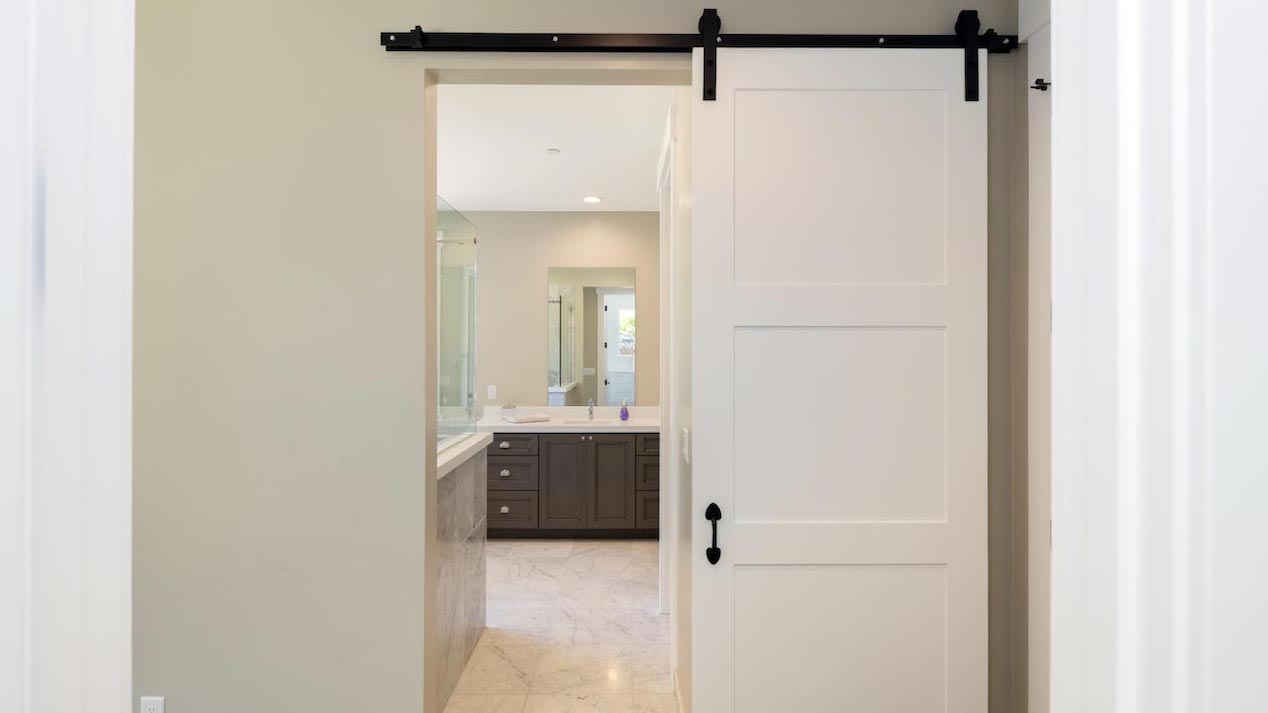
Photo: coralimages / Adobe Stock
Barn doors are the best option for existing homes because it’s expensive, difficult, and time-consuming to retrofit pocket doors due to having to open up and alter the wall cavity into which the door slides. Barn doors, on the other hand, are installed on the outside of the wall, and the only considerations and alterations necessary are the placement of light switches and electrical outlets.
Best for Small Spaces
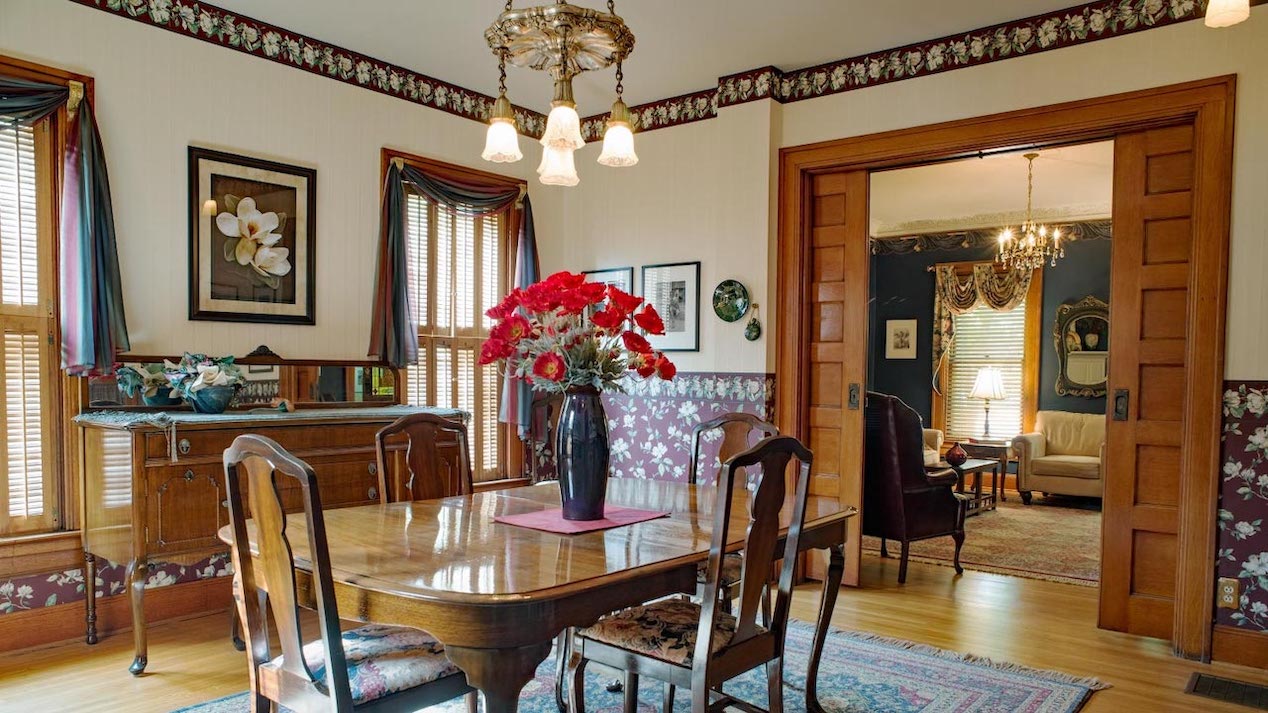
Photo: lawcain / Adobe Stock
Pocket doors are best for very small spaces, particularly if they’ve got a mirror finish. Not only do pocket doors save a little more space than barn doors, but with a mirror finish, when closed, pocket doors give the illusion of a lot of extra space, making a small room feel less claustrophobic.
Pocket Door vs. Barn Door vs. Shoji
Pocket doors are minimalist, barn doors are rustic, and shoji doors are simple and beautiful. Shoji doors are traditional Japanese sliding doors with wooden frames and rice paper or fabric inserts. Today, the rice paper is usually PVC-coated or adhered to a thin layer of plexiglass for strength. These doors let more light through when closed than pocket or barn doors, and the design options are endless. For a traditional Japanese look, these doors often feature cherry blossom paintings.
All three types of doors slide, but only pocket doors slide into the wall. Like barn doors, shoji doors slide alongside the wall on a single upper track that can be hidden with the installation of an offset beam.
Ready to Start Your Interior Door Installation?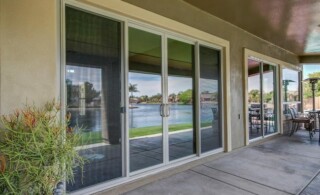 Replacing Your Sliding Door Like a Pro
Replacing Your Sliding Door Like a Pro 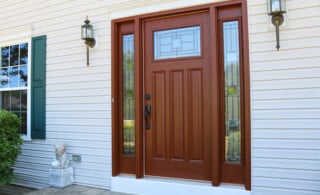 Prehung Doors: Easy Entry or Ready-Made Jamb?
Prehung Doors: Easy Entry or Ready-Made Jamb?  New Home Production is Falling Behind
New Home Production is Falling Behind 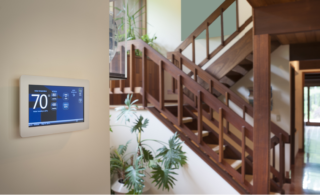 How to Choose the Best Smart Thermostat for Your Home
How to Choose the Best Smart Thermostat for Your Home  Leaky Pipes: Water Waste in Your Home
Leaky Pipes: Water Waste in Your Home 

Are You Familiar With This Topic? Share Your Experience.